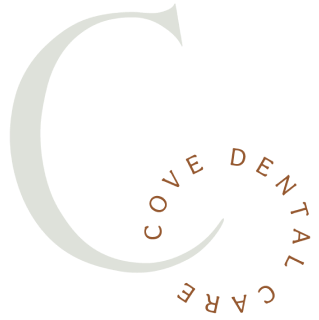How to Calm Dental Anxiety in Emergency Situations


Toothaches, chipped teeth, or lost fillings – dental emergencies can strike at the most inconvenient times. This leaves you not only in pain but also facing a surge of dental anxiety. If you’re someone who gets nervous at the dentist, an emergency can feel overwhelming. But don’t let fear prevent you from seeking the care you need. Here’s a guide packed with practical tips and strategies to help you calm your nerves and get through your emergency dental appointment.
Understanding Dental Anxiety
Dental anxiety is a prevalent issue affecting millions of people. It can manifest as fear, nervousness, or even full-blown panic attacks in a dental setting. The reasons for this anxiety vary. Some people might have had a negative experience, while others might have a general fear of needles, pain, or the loss of control. The good news is that dental anxiety is treatable. There are effective techniques you can use to manage your anxiety, even in a dental emergency.
Techniques for Immediate Relief
A dental emergency can be a stressful and frightening experience. It’s perfectly normal to feel your body go into fight-or-flight mode. This primal response is designed to protect you in dangerous situations, but it can be counterproductive when you’re at the dentist’s office. During fight-or-flight, your body floods your system with adrenaline, a hormone that prepares you for immediate action. This can manifest as a racing heart, rapid, shallow breathing, tense muscles, and even sweating. The good news is that there are simple techniques you can use to calm this response and regain a sense of control. Here are a few powerful methods to try:
Deep Breathing
Deep breathing is a simple yet incredibly effective technique for reducing anxiety at the moment. Find a comfortable position, either sitting or standing. Close your eyes if it helps you focus. Now, take a slow, deep breath through your nose. Imagine inhaling calming energy that fills your entire belly, not just your chest.
Hold this breath for a count of three, feeling the rise and fall of your abdomen. Then, slowly exhale through your mouth, releasing any tension you might be holding. Imagine all the anxiety and worry draining away with each exhale. Repeat this cycle of deep breaths for several minutes, focusing on the rhythm of your breath. You’ll likely feel your heart rate slow down, your muscles relax, and a sense of calm wash over you.
Progressive Muscle Relaxation
Progressive muscle relaxation is another powerful tool for calming your fight-or-flight response. This technique involves tensing and relaxing different muscle groups one by one, bringing your awareness to the physical sensations of tension and release. Start by focusing on your toes. Curl your toes tightly as if you’re gripping the floor, hold for a few seconds, then completely relax your toes. Feel the tension drain away as you breathe out.
Next, move up to your calves, tensing them for a few seconds, then releasing. Continue systematically tensing and relaxing muscle groups throughout your body, working your way up your legs, through your core, back, arms, neck, and face.
Visualization
Visualization is a powerful tool for quieting the mind and promoting relaxation. Close your eyes and imagine yourself in a peaceful and calming place. This could be a real place you’ve visited before or a fictional haven you created in your mind. Perhaps it’s a secluded beach with gentle waves lapping at the shore, the warm sun on your skin, and the soothing sound of seagulls calling. It could be a quiet forest bathed in dappled sunlight, with the scent of pine and the melody of birdsong filling the air. Engage all your senses in your visualization. The more vivid your visualization, the more effective it will be in promoting relaxation.
Communication is Key: Talking to Your Dentist
When you call the dentist’s office to schedule an emergency appointment, be upfront about your anxiety. Let them know the situation and explain that you have dental anxiety. A caring and understanding dentist will appreciate your honesty and work with you to make the appointment as comfortable as possible. Here are some things to discuss with your dentist:
- Your preferred communication style: Do you want them to explain everything they’re doing beforehand, or would you prefer to have minimal conversation during the procedure?
- Pain management options: Discuss pain management options available for your specific procedure. This could include local anesthesia (numbing the area) or sedation dentistry (nitrous oxide or oral medication) to help you relax further.
- Signals for breaks: Agree on a signal you can use to let the dentist Easley know you need a break during the procedure. This could be raising your hand, blinking a certain number of times, or simply saying “stop.”
Creating a Calming Space
The dental office environment can contribute to anxiety. Here are some ways to make it feel more manageable:
- Bring a comfort item: Pack a stress ball, a small stuffed animal, or a familiar object you can hold onto during the procedure.
- Listen to calming music: Ask the dentist if you can bring headphones and listen to soothing music during the appointment.
- Request a specific position: If lying flat in the dental chair increases your anxiety, ask if you can sit more upright or have your head propped up with pillows.
Building a Long-Term Strategy for Managing Dental Anxiety
While these tips can help you manage anxiety in an emergency, it’s important to develop a long-term strategy for overcoming dental anxiety altogether. Here are some steps you can take:
Explore Sedation Dentistry Options
If your anxiety is severe, discuss sedation dentistry with your dentist. This can make a significant difference in your experience. There are various sedation options available, each with its level of intensity:
- Nitrous oxide (laughing gas): This mild sedative creates a feeling of relaxation and lightheadedness, making the time pass quicker.
- Oral medication: Your dentist may prescribe medication you take before your appointment to induce a state of calmness.
- Intravenous (IV) sedation: For more severe anxiety, deeper sedation through an IV can be administered. This approach keeps you conscious but in a deeply relaxed state with minimal memory of the procedure.
Address the Root Cause with CBT
Dental anxiety often stems from negative thought patterns associated with dental procedures. These thoughts can be irrational fears of pain, needles, or loss of control. Cognitive Behavioral Therapy (CBT) is a form of therapy that can help you identify these thought patterns and develop healthier coping mechanisms. CBT teaches you to challenge negative thoughts and replace them with more realistic and positive ones. This empowers you to approach dental appointments with a calmer mindset.
While a dental emergency can be stressful, remember you’re not alone. By utilizing relaxation techniques, advocating for your preferences, and potentially exploring sedation options, you can effectively manage your anxiety and receive the treatment you need. Don’t let fear prevent you from seeking care – a prompt visit can minimize further complications and get you back to smiling comfortably.
